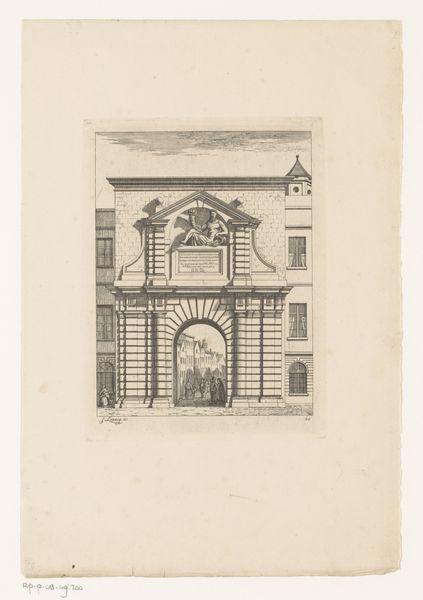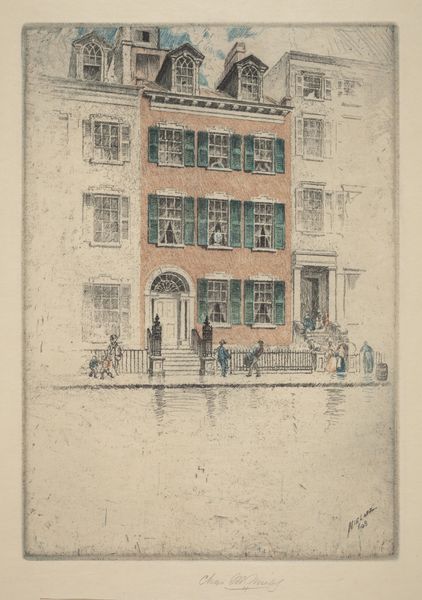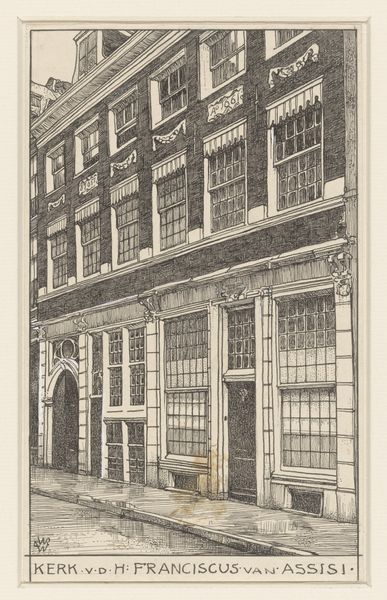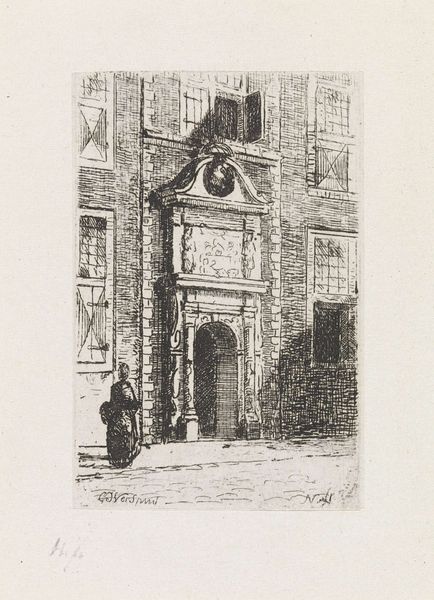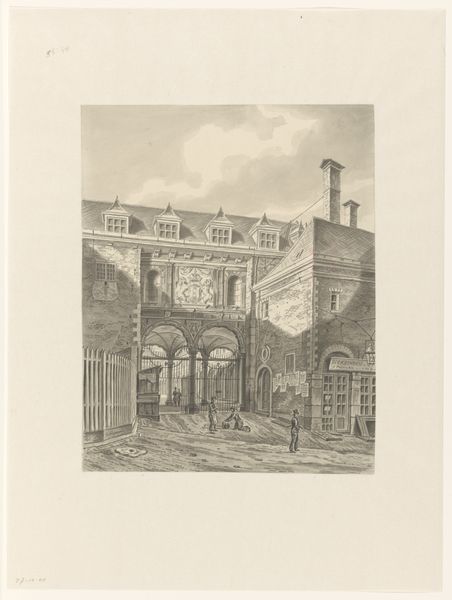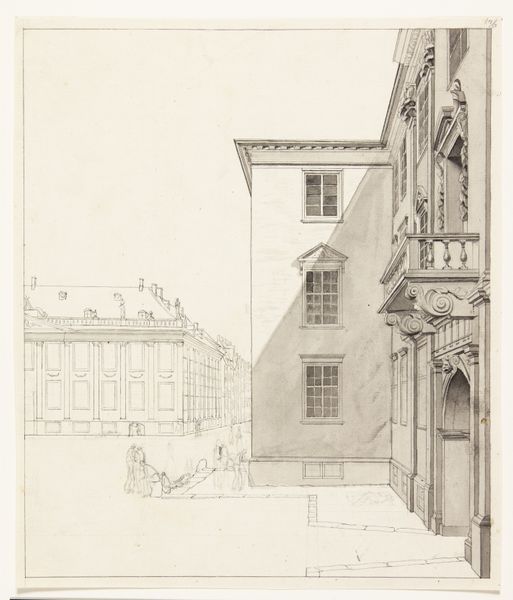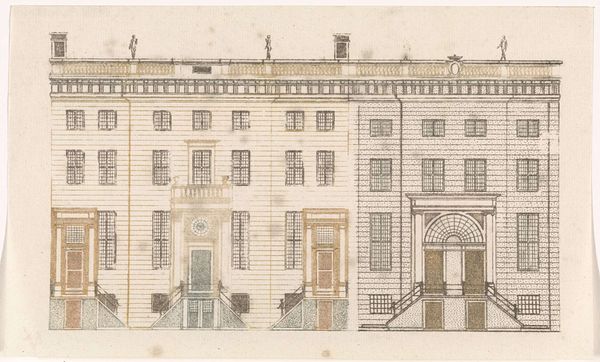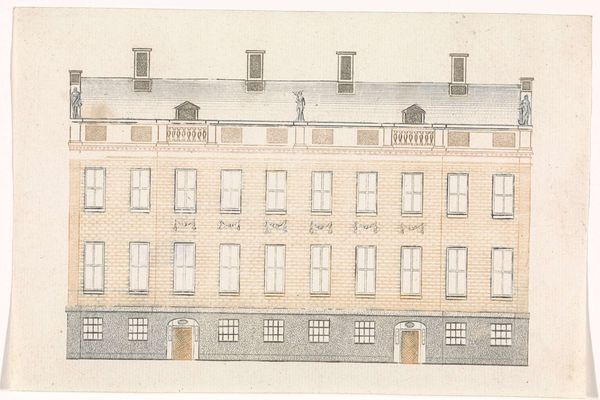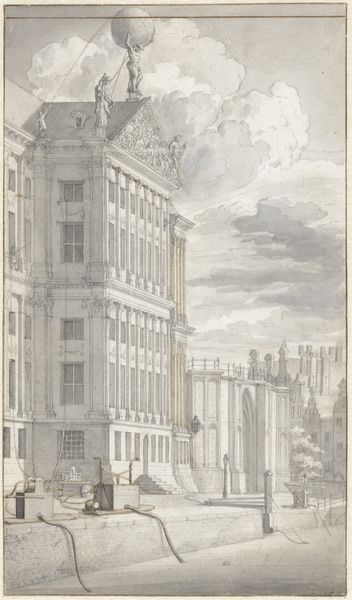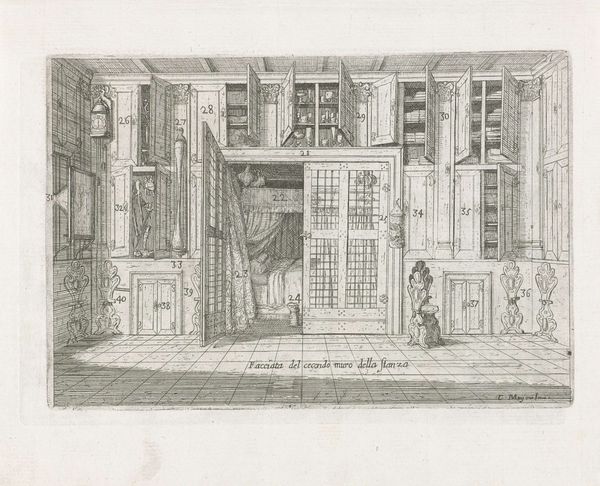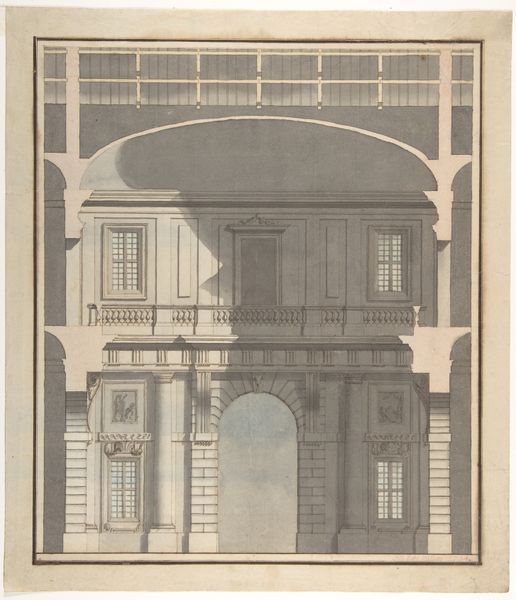
drawing, print, watercolor, architecture
#
drawing
#
neoclacissism
# print
#
landscape
#
watercolor
#
cityscape
#
architecture
Dimensions: sheet: 12 1/4 x 8 1/4 in. (31.1 x 21 cm)
Copyright: Public Domain
Editor: This delicate watercolor and print piece captures "The Duke of Queensbury's House, Piccadilly," sometime in the 19th century. I'm struck by the artist's focus on symmetry and architectural precision; it feels almost like a stage set. What formal elements stand out to you? Curator: Indeed. Note how the artist uses linear perspective to create a sense of depth, drawing the eye toward the central doorway. The building's facade, meticulously rendered, serves as the primary subject. How would you describe the interplay of light and shadow? Editor: I see a deliberate contrast; the stark white pillars against the darker brick. The shadow lends volume, but the colour palette feels restrained. Curator: Precisely. This careful calibration guides the viewer's gaze and contributes to the overall balance. The texture, created through hatching and layering, enlivens the architectural forms. Do you observe anything beyond the basic geometry? Editor: Yes, there is a sculptural figure above the door and some ornate railings. What about them? Curator: Observe how these details, though small, enhance the sophistication and character of the house. The composition relies on these small accents to keep it from being austere. Every formal component works harmoniously to convey its architectural splendor. What would you say is the dominant principle of organization here? Editor: It is clearly structured by symmetry. I thought it was merely decorative at first but its repetition really organizes everything. I now appreciate the attention given to geometric regularity. Curator: A worthy observation, and a key takeaway from a formalist approach. We move beyond the literal depiction and enter a realm of carefully constructed visual relationships. Editor: It’s remarkable to see how even a simple building portrait can reveal a wealth of structural meaning when viewed through the lens of formal analysis.
Comments
No comments
Be the first to comment and join the conversation on the ultimate creative platform.
